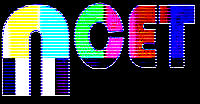 |
The following is borrowed from Richard's page on the Fish Creek Music site:
"My work in electronic music began in the early sixties, as a part of the San Francisco Tape Music Center with Morton Subotnick, Ramon Sender and Pauline Oliveros. Possibly the most formative experience came in 1967-8 as the composer-member of a resident five-artist group at the National Center for Experiments in Television, established by the Rockefeller Foundation to explore the possibilities of television as a logical extension of each artist's craft. It was a heady time, with major figures such as Charles Olson, James Rosenquist, and Robert Creely passing through to participate in our debates (Is television unique or simply a means of broadcasting film- or theatre-like experiences to other parts of the community? What is the cognitive difference between television's direct light and the reflected light of virtually all other visual experience?) and our creative work. As a part of the Center, I composed Linearity--a Television Piece for Harp and Live Electronics (1968), in which the television system's extensive processing and memory capacities were employed. Incorporating instructions for cameramen and control room, the score is composed in two passes, the first of which lays cues for the second, which overlays it. The result can be broadcast but not performed on a concert stage.
"Around the same period, I wrote Glossolalia for baritone voice, percussion, organ and tape, a work which attempted to use the electronic medium with the same fluency and musicality of gesture as acoustical instruments, while addressing cognitive questions by employing "documentary" sounds as the material to modify (organ bellows, singer's voice) and phonemic deconstruction of the Latin text for timbral transfer to the instruments. Most of my music for the next decade and a half involved electronics.
"Acoustics and architecture are my two other passions. In the early seventies I wrote Galactic Rounds, an orchestral work which used rotating trumpets and trombones dispersed throughout the orchestra to create Doppler shifts. Interest in acoustics led to an interest in non-Western instruments (In Celebration of Golden Rain for Indonesian gamelan and organ; Opus One CD #155 which addressed the problem of multiple simultaneous tunings) and my encounter with David Wessell and cognitive psychology during a year at IRCAM in the eighties led to my efforts to create CNMAT after my return to Berkeley. In the nineties I developed a seminar in advanced orchestration based on psychoacoustics.
"Architecture is a field to which sound can contribute creatively just as light does, but it is not studied with this in mind and architecture/music combinations are rare as course topics. An exception is my colleague Marc Treib, who has repeatedly asked me to participate in his studios when he has devised a music-related problem for his architecture students. Those collaborations led to his book, Space Calculated in Seconds: The Philips Pavillion, Le Corbusier, Varèse (Princeton University Press), to which I contributed an analysis and commentary on newly discovered manuscripts of the Poème éléctronique." |
 |

